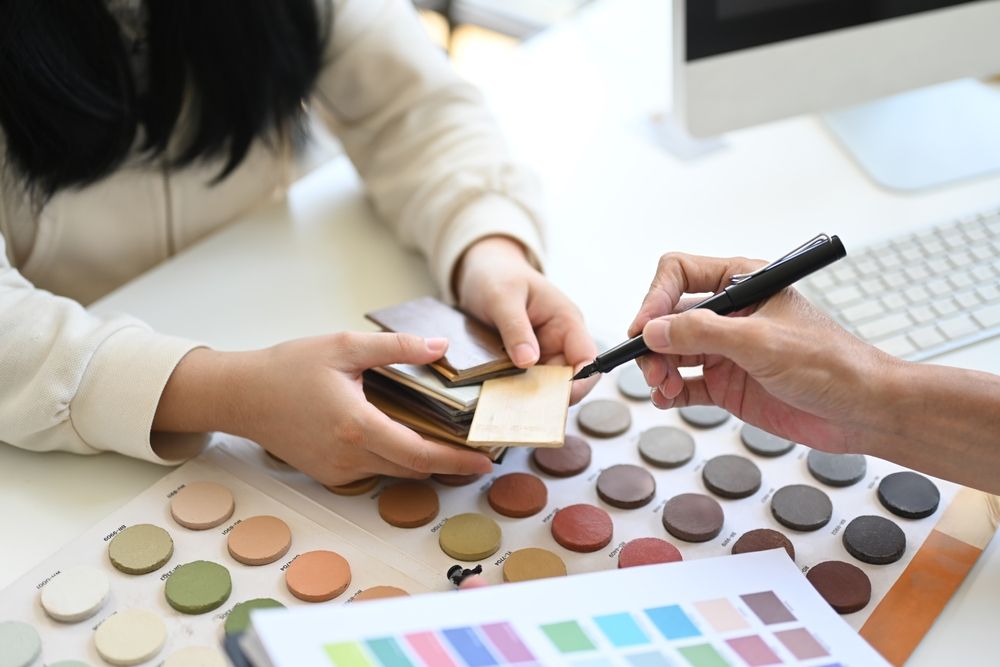Whether you’re moving into a new house, renovating a kitchen, or simply refreshing your living room, one big question often comes up: Should you hire an interior designer? For some, it’s a no-brainer—a designer’s expertise can turn any space into a showstopper. For others, it feels like an unnecessary expense, especially with so many DIY resources and inspiration available online.
So how do you decide? Let’s break down the major pros and cons of hiring an interior designer so you can make the best choice for your project, budget, and personality.
The Pros of Hiring an Interior Designer
1. Professional Expertise and Trained Eye
Interior designers spend years studying layouts, lighting, color theory, spatial balance, and materials. They understand how different textures, finishes, and proportions work together. Their trained eye can spot opportunities or problems that most homeowners would miss.
What this means for you:
-
Fewer costly mistakes (like buying a sofa that’s too big for your space).
-
Thoughtful details that tie a room together, from rugs to drapery lengths.
2. Saves Time and Reduces Stress
Designing or renovating a space takes hours of research, sourcing, and coordination. An interior designer manages that workload for you. They can:
-
Provide mood boards and samples that speed up decisions.
-
Source items faster through industry contacts.
-
Handle ordering, scheduling, and overseeing installations.
This frees you from countless errands and headaches—especially useful if you have a busy job or family life.
3. Access to Resources and Tradespeople
Designers often have established relationships with contractors, painters, upholsterers, and suppliers. They may also have access to trade-only showrooms and discounts that aren’t available to the public.
Hiring a designer could mean:
-
Getting higher-quality or more unique furnishings.
-
Working with trusted tradespeople who are less likely to cut corners.
-
Potential cost savings on products through designer discounts.
4. Personalized, Cohesive Results
Pinterest boards are inspiring, but translating scattered ideas into a harmonious room is harder than it looks. A designer can take your preferences and lifestyle needs and turn them into a unified, well-thought-out plan.
This often means:
-
Smarter furniture layouts that maximize space.
-
A home that feels tailored to you, not like a generic showroom.
5. May Increase Your Home’s Value
A professionally designed space tends to photograph and show better, which is valuable if you’re selling soon. Smart improvements in kitchens, bathrooms, or living areas can deliver a higher return on investment.
The Cons of Hiring an Interior Designer
1. Additional Expense
There’s no way around it—hiring a designer costs money. Interior designers may charge:
-
Hourly rates (often $75–$200/hour).
-
Flat project fees.
-
Or a percentage of your overall budget (typically 10–20%).
This is on top of what you’re already spending on furniture, materials, or renovations.
If you have a tight budget, paying for a designer may mean cutting back elsewhere.
2. Less Direct Control
When you bring in a professional, you’re trusting them to steer decisions. While a good designer listens closely to your input, you might still have to compromise on certain ideas. Some homeowners enjoy making every small choice themselves—if that’s you, collaborating closely or handing over creative control could be challenging.
3. Potential for Personality Mismatches
Interior design is a personal process. If your style doesn’t align with your designer’s, or if communication is poor, the process can become stressful. It’s crucial to thoroughly vet designers, review portfolios, and check references to ensure a good fit.
4. Longer Timelines in Some Cases
Ironically, while designers often speed up the decision process, working with one can sometimes extend timelines due to:
-
Sourcing specific custom items.
-
Waiting for the designer’s schedule to open.
-
Coordinating multiple trades under their supervision.
If you’re hoping for a quick DIY refresh, bringing in a designer may introduce more steps.
5. Risk of Going Over Budget
Designers typically work within the budget you set. However, because they often encourage investing in quality pieces or recommend unexpected splurges, you may end up stretching your budget. It’s important to be upfront about hard limits and insist on regular budget updates.
When Hiring a Designer Makes the Most Sense
Not every project needs a pro, but here’s when one can be especially valuable:
-
Major renovations: If you’re moving walls, changing plumbing layouts, or undertaking significant remodels, a designer can help avoid functional mistakes and work smoothly with architects or contractors.
-
You have the budget but not the time: If your schedule is packed, letting someone else handle the design and logistics can be a relief.
-
Unique spaces: Oddly shaped rooms, small apartments, or homes with architectural quirks often benefit from a designer’s space-planning expertise.
-
You’re stuck: If you’ve tried to pull things together yourself and nothing feels right, a designer can bring fresh eyes and professional solutions.
When You Might Skip the Designer
-
You’re doing simple updates: Painting walls, swapping out light fixtures, or buying new throw pillows are projects you can easily tackle yourself.
-
You truly enjoy the design process: If browsing showrooms, creating mood boards, and arranging furniture are your idea of fun, you may not need a pro.
-
You’re on a strict budget: If money is tight, you can allocate funds to quality materials and DIY rather than professional fees.
How to Make the Best Choice for You
If you’re on the fence, consider starting small. Many designers offer consultation packages, where you pay for a few hours of their time to get ideas or a color palette, but then implement it yourself. This gives you professional guidance without the full cost of a comprehensive design service.
Also:
-
Be clear about your budget from the start.
-
Ask to see previous projects similar to your style.
-
Get detailed proposals in writing to avoid misunderstandings later.
Hiring an interior designer is a very personal choice. It comes down to your comfort level, your available time, your budget, and how hands-on you want to be. While it’s an extra expense, the payoff can be a stunning, functional space that you might not achieve on your own.
Weigh the pros and cons honestly. If you value expertise, time savings, and a truly cohesive look—and can afford it—a designer may be well worth the investment. If you love hunting for pieces and arranging your space bit by bit, DIY could be the perfect path for you.





